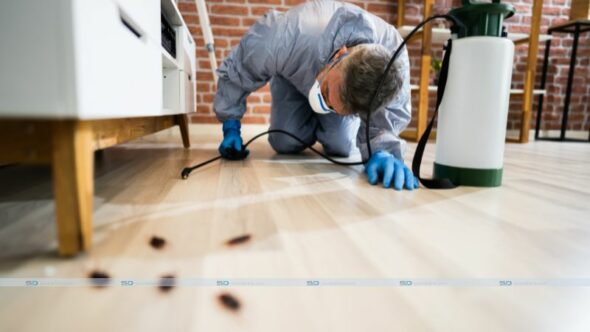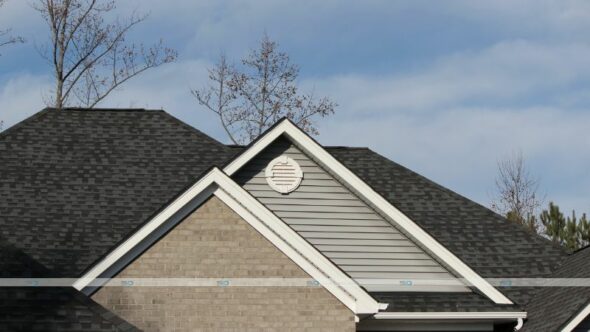It seems the cost of homes just go up and up. The rental market is soaring, of course, because far too many young professionals simply cannot afford the down payment for a property near where they work. It can be frustrating to be seemingly kicked out of the property market, but there are options for many young people to consider. One of the best options for first time home buyers or those who want a larger property typically out of their budget is to opt for a property that is commonly referred to as a “fixer upper.” These properties are ones that need work done before you can move in, but their reduced price can be very appealing.
There are also loans available that allow you to put a portion of the money towards the purchase of the property, and the rest to use for the remodel, called a 203(k) rehabilitation loan. If you get a quote for the costs from a contractor from the get-go, you can negotiate to have the price of the remodel included into your mortgage. That way, you can have your dream home within your budget, the only difference is that it will take a bit longer to be move-in ready.

Choosing the Right Property
The first step to choosing a fixer upper, regardless of whether the goal is to live in it or flip it for sale, is to choose the property in question. There are many factors that determine the quality of a property, and knowing what those qualities are will help you choose the best investment possible.
- Location
When choosing any property to live in, location is always key, and the same principle applies here. The only difference is that you can look for more central and established areas, rather than up-and-coming neighborhoods. That’s because fixer uppers are marked lower, simply due to the work needed for the property to be visible.
- Size
It will always be cheaper to renovate a home than it will be to tear one down and build from the ground up. That’s why when you opt for a fixer upper you should try to find a property within the middle-housing market, or, properties that have three bedrooms and are the perfect size for an average family. Not only will this let you grow into it comfortably, but you will also be able to sell the property for the highest value later on.
- Layout
Changing the layout of a home can be very expensive because homes do need support in order to stand up and changing those structures around can add up. Being happy with the layout of the property from the get-go is a great way to save money and focus on the fixes that matter.
- Condition
The ideal home is one whose appearance has turned away other buyers, but whose condition really just needs a little TLC. Homes that are under threat of collapsing would not be a good option, unless you planned from the get-go to tear it down. The easier the fix on a property, the cheaper that fix will be.
Things to Check in an Inspection
Easy fixes include redoing the walls, fixing broken windows, and updating the fixtures of a property. These fixes are so easy, in fact, that in most cases they can be done by yourself. What you should never do, however, is assume that the property is full of easy fixes without conducting a home inspection, as there could be a lot of hidden deficiencies in a property that could bankrupt you to fix. Key areas to check are the foundation, the roof, electrical, and plumbing.
Other considerations to check include the sewer in need of a sewer line repair. Consider getting a pest control inspection done, as anything from mice to termites could pose a serious problem in any property. The more quality checks and certifications you get on the property, the surer you can be of its safety and of the quality of the home. Do this, and you will have a clearer idea of how much it will cost to fix and whether it is a good investment or not.
How to Find the Best Professionals for Harder Jobs
Not all problems in a fixer upper can be tackled with a bit of can-do attitude and some paint. Water damage, for instance, is not something to be taken lightly. The presence of mold in a home can be irritating to individuals who are sensitive to is, and cause coughing, itchy eyes, skin irritation and throat irritation. For those who have weakened immune systems or are allergic to mold the threat is more severe, and can even lead to an infection in the lungs.
Water damage has further dangers when you consider the structure of your property, and not addressing the cause of the water damage could spell disaster for you later on, that’s why water damage restoration is needed as soon as possible. That is why you should always hire ServiceMaster Restoration services. If water damage, fire damage, or storm damage occur to your property, they will first work with your insurance company, but otherwise are known for the excellent customer service. When you are cleaning up a fixer-upper, you need to rely on a professional service to get the job done right.
Remodeling a Home
In rare cases, the point of a fixer upper is not to fix up the structure that was already there, but to instead purchase the land. This happens most notably in urban areas. If you cannot afford a done-up property, a run-down one is an excellent investment. You can remodel the interior, or you could tear it down and start from the ground up. When this is your goal, you will need a designer and a contractor. The more specific details you can offer, the easier the process will go for you. Look for inspiration and photographs to show them (especially if the photos also contain contact information for, say, the stair company). That way they will be able to create your dream home to your exact specifications. It will also make the design and build process much faster.







